The number of new products that fail is high. According to Harvard professor Clayton Christensen, more than 30.000 new consumer products are launched every year. 85% of them fails. Ask anyone for the percentage of new products that fail, and the usual answer is somewhere between 70 and 90%. In the meantime the development and introduction of new industrial and consumer products has become difficult and very expensive. The next obvious question is: “What is the cause of those failures?” This perspective highlights user adoption and nudging user groups into the use of breakthrough innovations.
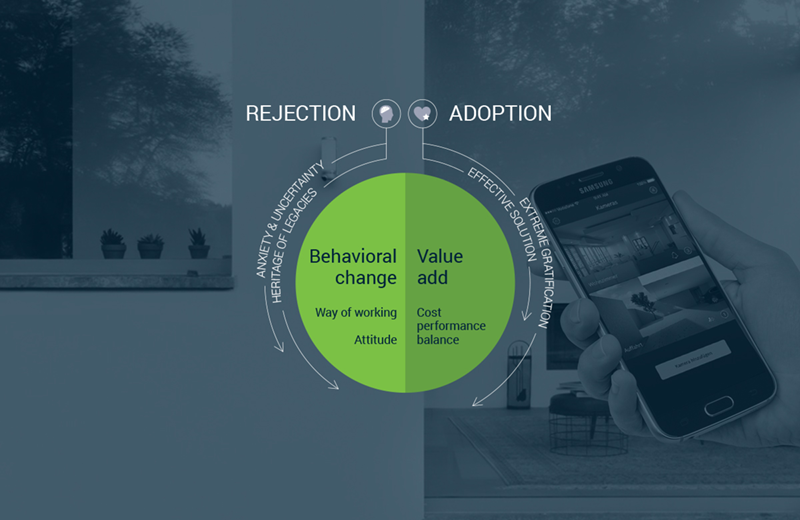
Develop products that customers actually want to use
Surviving the chasm
The product life cycle is familiar to most marketers: when you introduce a new product, it goes through different stages of adoption. At first the product sells slowly to a few geeky people who love technology for technology’s sake – called innovators. Then it progresses to a larger portion of the population, a group that sees potential and is willing to deal with bugs, shortcomings and incomplete feature sets because they are visionaries. These are the early adopters, they see in fact huge potential.
The next group of people are very different than the first two groups. The early majority are far more pragmatic and want solutions for their existing problems. They only buy products that are mature, not beta products. These needs may be explicit, but often they are unspoken.
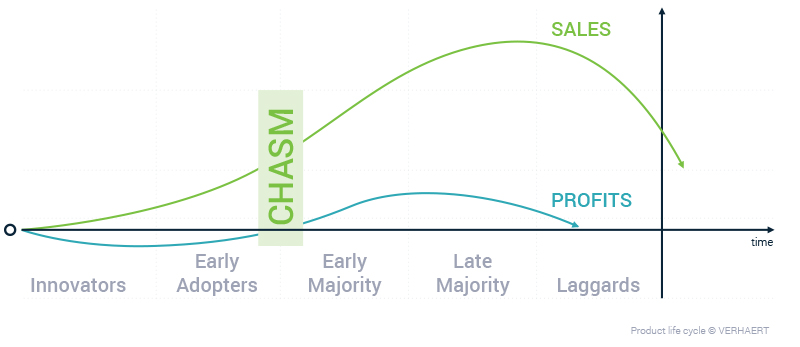
In 1981 Moore brought us a useful insight that there is a chasm or a hard stop in sales growth that, in most cases, kills innovations. Why? It’s a legitimate question, but even more relevant in my opinion is how we can overcome as product developers. It’s clear that the ones conceiving new products may have a vast impact on overcoming this problem.
Do people say what they do?
What’s in fact beyond the product life cycle? What motivations and needs do they have? Are there any distinctive differences between innovators, early adopters and the early majority in terms of requirements? And what provides the baseline for these changing requirements? In product development it doesn’t make sense to look at market geographies or financials nor on market conditions. It makes much more sense to look at people. In essence we look at how people (intent to) behave because poor understanding of customer needs and motivations leads to a bad connection with users and often to undifferentiated products. Product failure is glimpsing around the corner.
Developers look often to unmet needs. Or needs we know they exist and are addressed by others but might have an improved execution. Breakthrough innovators seek needs that have not been identified yet, let’s say unarticulated needs. Very challenging if we need to avoid the chasm.
People are the means to discover value
Value has become the new mantra during the 00’s. While the 70’s were about technology and the 90’s about experiences and putting people in the center of gravity, the noughties have become the socially led innovation era. Analyzing the daily life hence gained importance to connect products, services and more in general new value propositions with users. What makes sense to them has become the obvious question.
Looking out for sustainable growth means we have to understand the motivations and needs of multiple user groups. – Dany Robberecht, Director Consulting Office at Verhaert Masters in Innovation
How to analyze everyday life? Thinking in practices helps, a set of activities, routines, habits or daily chores for which R&D teams need to build a deep understanding. They need to understand these practices or jobs-to-be-done, the underlying motivations and needs, who is involved and what competences are needed to execute them successfully. Design teams in fact dive into the various jobs people try to do and into the processes to execute them. The tricky thing is that practices have become a nexus of many people and products. While people and products have become a nexus of many practices. Practices emerge and reproduce. After they reproduce they disintegrate: like any product or feature practices have a life cycle as well. Early stage recognition of opportunities for new emerging practices have become extremely important for leading innovators in designing new product and service systems.
Distinctive features create value add
Successful products and services have distinctive features compared to other value propositions in the market. Nowadays consumers seek at high pace meaningful products that make it easy to perform their jobs. The better researchers and developers connect with these jobs, by identifying and translating them into well executed functions and processes, the more triumph comes your way.
I can get no satisfaction
Users connect with each other. They turn to new services and work around the system. Their expectations are crossing industries and they make their own choices. The world has become more complex than ever before, making innovation more challenging and unpredictable. Most importantly it’s easy to loose connection with your audience. What can you do? It’s not about pushing more of what you have. It’s about how you connect with your customers and how they connect to each other.
The challenge is to find out what your customers really care about. Excelling products have distinctive features appreciated by users and result in a higher willingness to pay.
Useful insights are often found with extreme users, being non-users and intensive users. Non-users outline obvious objections and provide meaningful insights in novel (unserved) jobs or other ways they found to fulfill the jobs you try to accomplish.
Intensive users tend to be never satisfied seeking more ways to use your products and services. Insights on underserved jobs are very likely to surface when targeting this user group.

How user centric do you need to become?
We all talk about our users, but how well do we know them? Likewise innovation, user centricity comes in different flavors. There are still plenty of companies that make products that work well, but lack focus on users. From an innovation perspective this is obviously a problem. At second, we find organizations that secure the cognitive ergonomics or more in general the usability and convenience of products, hence make sure they avoid misuse and unintended use. Behavior is merely geared to the human factors. Growing into user centricity leads to companies seeking unprecedented experiences resulting into a unique perception within the market. At this point the x-factor becomes a discriminator creating a fan base among users. Eventually it progresses to companies that intend to change the behavior of people. Many innovative start-ups are active in this field of play.
The user centricity ladder indicates the thinking, strategy and objectives beyond, but also illustrates the skills and resources needed to meet a growing need in understanding your users.
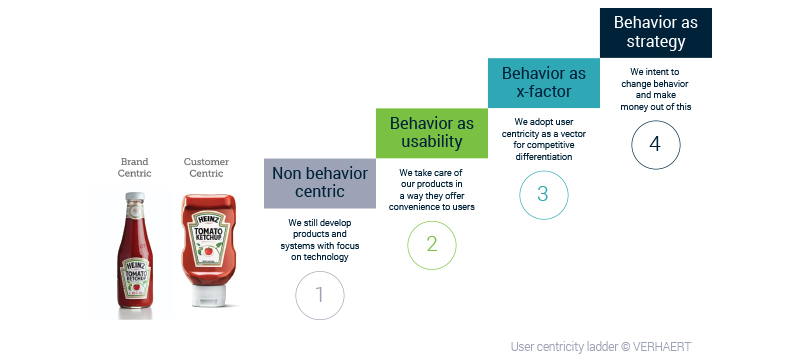
Many of us who want to create a new world with breakthrough innovations (e.g. smart homes, smart cities, smart mobility, smart infrastructure, smart energy, smart health or smart industries) face the challenge of more rapid user adoption. Breakthrough technology often needs breakthrough user concepts to become adopted more quickly.

During our Innovation Day 2017 we organized a survey on how user centered participants are, what abilities they consider important and how they in fact perform on these competences. It’s clear that new competencies emerge as you progress throughout the ladder.
Looking at the entire journey of your customers can create a meaningful role for your service – Dany Robberecht, Director Consulting Office at Verhaert Masters in Innovation
Download the perspective to read more on design rules that beat conservatism
- Engineering behavioral change
- 7 rules in designing change
- Stop telling them
- Seek user growth through game changers
- Start with simple behavior
- Allow technology to support you
- Create magnets with cognitive design
- Built in behavioral economics
- Find others that benefit and enforce
- A model based approach



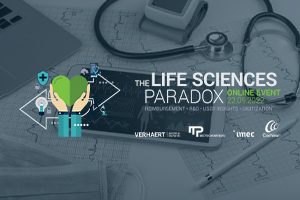
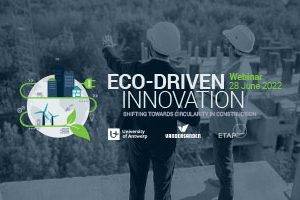
Leave a Reply
Your email is safe with us.